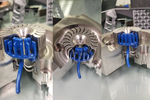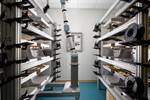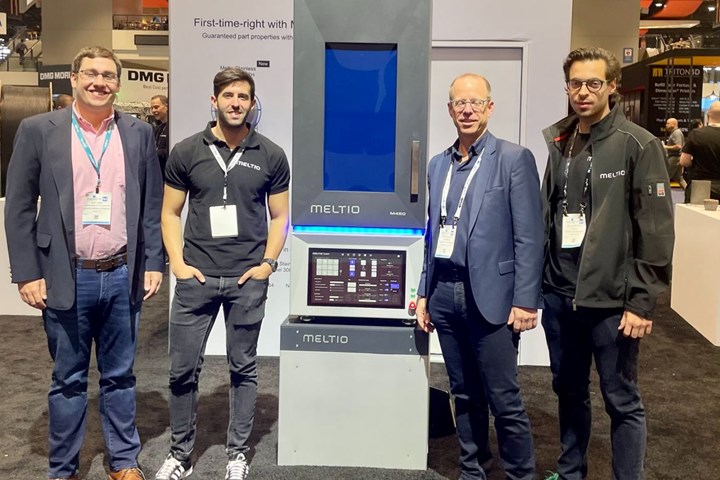Siemens Expands Additive Manufacturing Initiatives in the U.S.
Technology company increases focus and support of AM R&D at its Charlotte Advanced Technology Collaboration Hub, which is also incorporating metal binder jet technologies from Meltio, Desktop Metal.
Meltio, a wire-laser metal 3D printing provider for various end markets and applications — such as mold and die — confirmed its agreement with Siemens managers at Rapid TCT in Chicago. Shown between them is the Meltio M450. Photo Credit: Meltio
Siemens has announced its expanding focus on additive manufacturing (AM) initiatives in the U.S. to help accelerate the transformation of this industry through serial AM.
“We are on the threshold of a new frontier in American industry, where the implementation of AM will bring fundamental changes to the landscape, end-to-end, from product to machine to manufacturing,” Steve Vosmik, head of Siemens Additive Manufacturing in the U.S., says. “Siemens is excited to be at the forefront of this process.”
As the company is focused on supporting the domestic AM machine builder community, Siemens is bringing its motion control, automation hardware, digitalization software and technology capabilities to assist machine builders. From its Charlotte Advanced Technology Collaboration Hub (CATCH), located in Charlotte, North Carolina, Siemens will act as an ecosystem platform for machine builders, machine users and additive design engineers alike.
“More than 100 machine builders from around the world are implementing Siemens automation solutions to industrialize their machines,” Rajas Sukthankar, vice president, motion control, Siemens Industry Inc. adds. “Now it’s time to support even more customers and accelerate their transformation from single machines to series additive manufacturing factories. North America is heading in this direction.”
Siemens can assist AM job shops as well as Tier 1 production facilities with end-to-end solutions, including product design software, digital twin machine simulation and virtual execution of manufacturing methods, with full data feedback into the design protocol for necessary adjustments, prior to any machine building.
The company is adding technology to CATCH to incorporate metal binder jet technology through the purchase and installation of an ExOne/Desktop Metal Production System and Meltio Robotic System with the Siemens Sinumerik RunMyRobot application onboard. Sinumerik RunMyRobot controls the kinematic path of an industrial robot as it integrates with the CNC machine.
Siemens is also establishing an Additive Manufacturing Advisory Board of renowned industry leaders in AM, drawn from various industries and technical disciplines, to provide the company guidance, as it seeks to support the fast-growing needs of the AM market. “We are looking forward to engaging and collaborating with this talented group of industry experts as we move ahead together into this new world of manufacturing in America,” Vosmik concludes.
Related Content
-
In "Hybrid" FIM Process, 3D Printing Complements Injection Molding
Alpine Advanced Materials used a desktop 3D printer and the freeform injection molding process to reduce prototype tooling production time and cost for its customers.
-
3D Printing Technologies for Moldmaking Applications
3D printing technologies, from conformal cooling to complex mold building, are making an impact on the moldmaking industry, one innovation at a time.
-
3D Printing Enables Better Coolant Delivery in Milling Operations
Just like 3D printing enabled conformal cooling channels in molds, additive manufacturing is now being used to optimize coolant delivery in cutting tools.
















